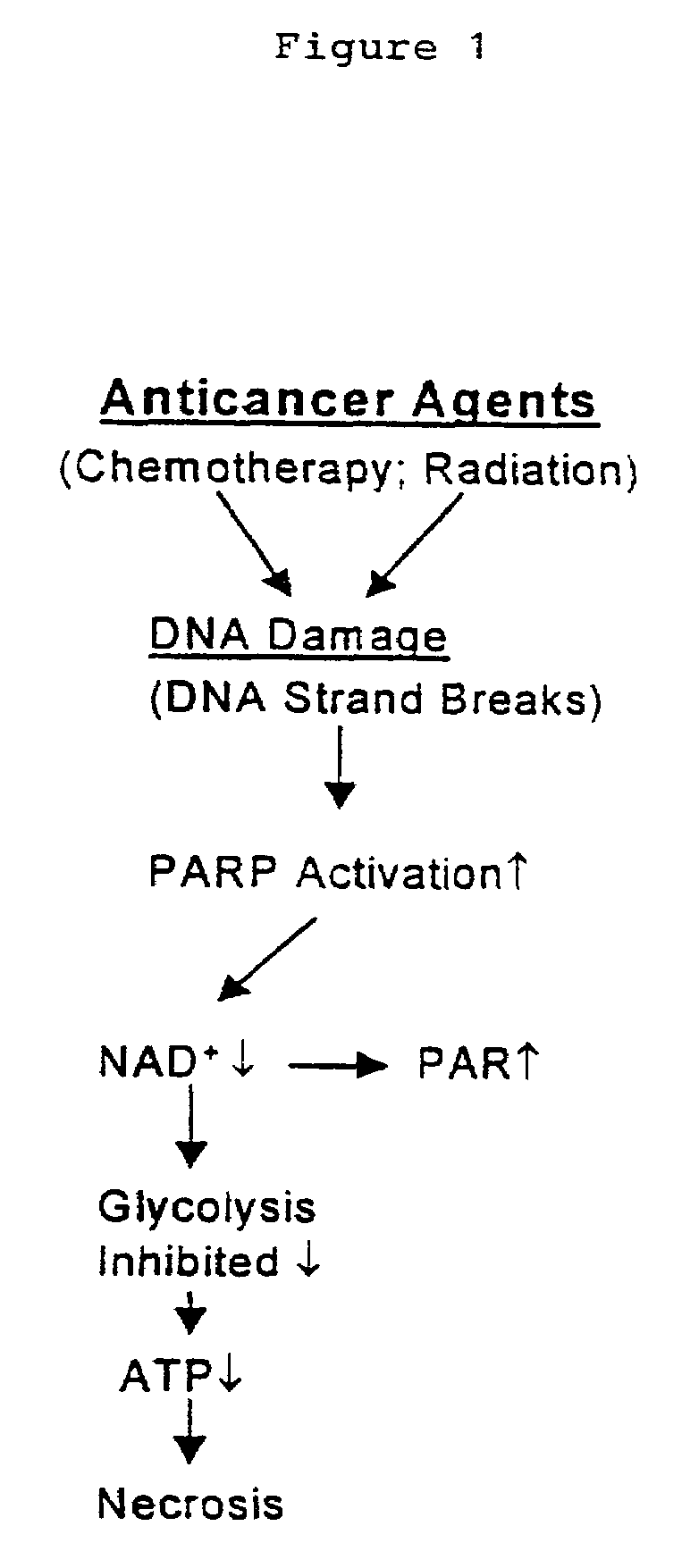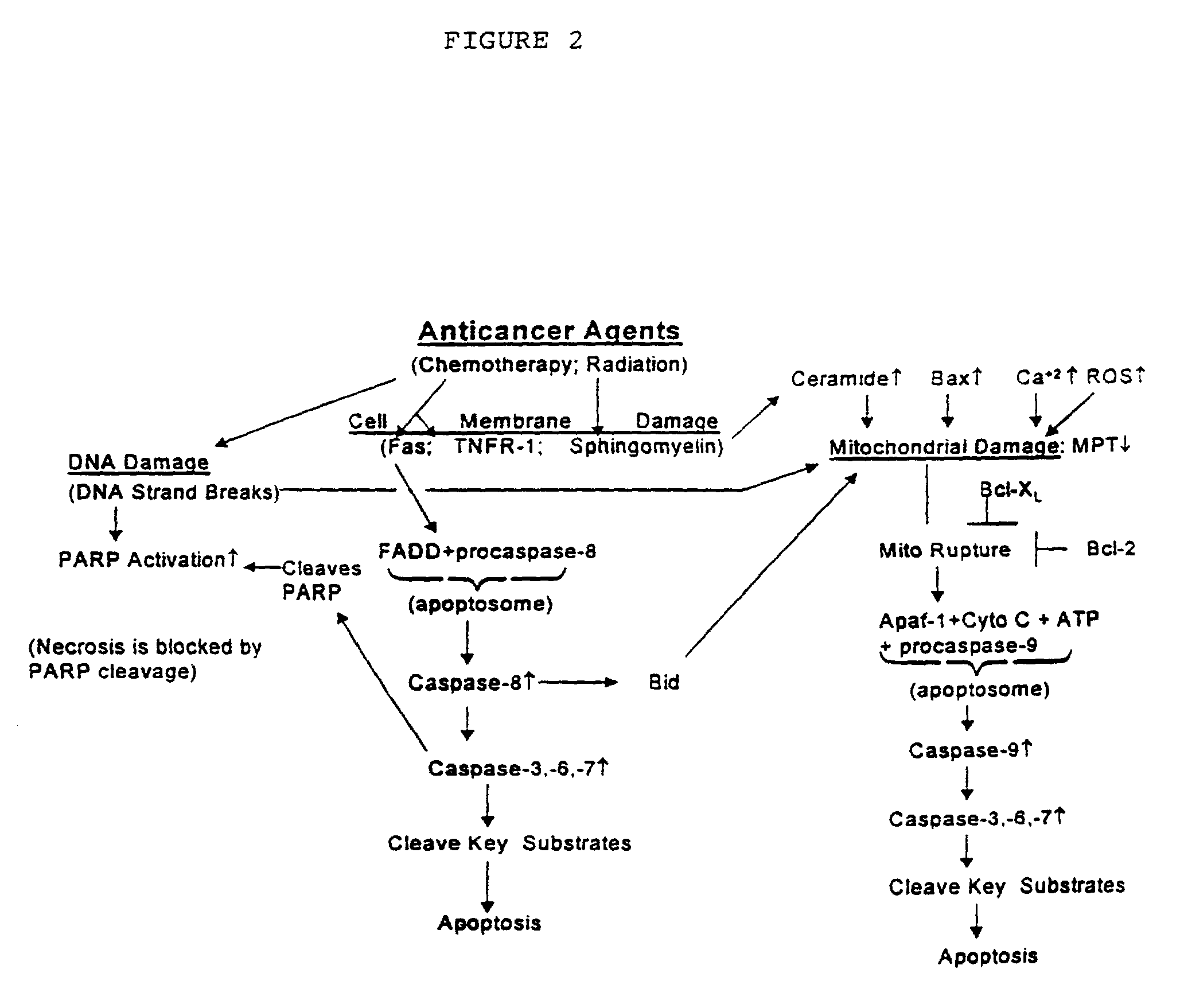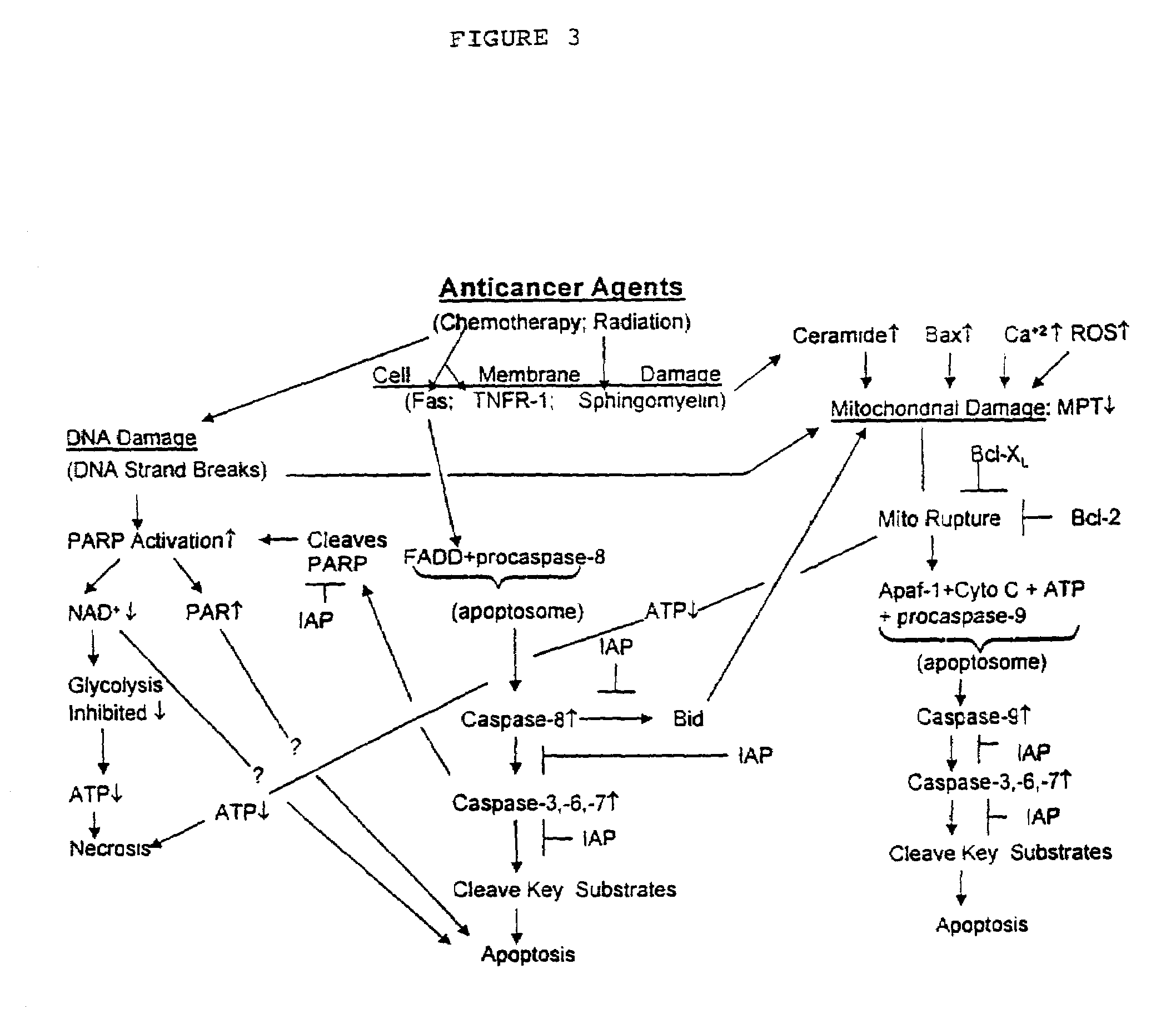Treatment of cancer by reduction of intracellular energy and pyrimidines
a technology of intracellular energy and pyrimidine, which is applied in the direction of phosphorous compound active ingredients, drug compositions, peptide/protein ingredients, etc., can solve the problems of less sensitivity of cells to agents, damage, recovery, re-growth, and tumor recurrence yielding only a short remission period
- Summary
- Abstract
- Description
- Claims
- Application Information
AI Technical Summary
Benefits of technology
Problems solved by technology
Method used
Image
Examples
Embodiment Construction
[0020]This invention provides a method for treating a cancer subject comprising administering to the subject a combination of ATP-depleting agents, pyrimidine antagonist, and an anticancer agent to which the treated cancer is sensitive at concentrations which deplete the ATP level to at least 15% of normal in cancer cells.
[0021]This invention provides a method for induction of cancer cell death comprising contacting said cancer cell with a combination of ATP-depleting agents at concentrations which deplete the ATP level to at least 15% of normal in cancer cells. This invention provides the above method, further comprising a pyrimidine-depleting agent. The invention also provides the above method, further comprising an anticancer agent. In an embodiment, the cancer is clinically sensitive to the employed anticancer agent.
[0022]This invention provides a method for treating a cancer subject, and for the induction of cancer cell death, comprising administering to the subject a combinati...
PUM
| Property | Measurement | Unit |
|---|---|---|
| tumor shrinkage | aaaaa | aaaaa |
| weights | aaaaa | aaaaa |
| weights | aaaaa | aaaaa |
Abstract
Description
Claims
Application Information
 Login to View More
Login to View More - R&D
- Intellectual Property
- Life Sciences
- Materials
- Tech Scout
- Unparalleled Data Quality
- Higher Quality Content
- 60% Fewer Hallucinations
Browse by: Latest US Patents, China's latest patents, Technical Efficacy Thesaurus, Application Domain, Technology Topic, Popular Technical Reports.
© 2025 PatSnap. All rights reserved.Legal|Privacy policy|Modern Slavery Act Transparency Statement|Sitemap|About US| Contact US: help@patsnap.com



